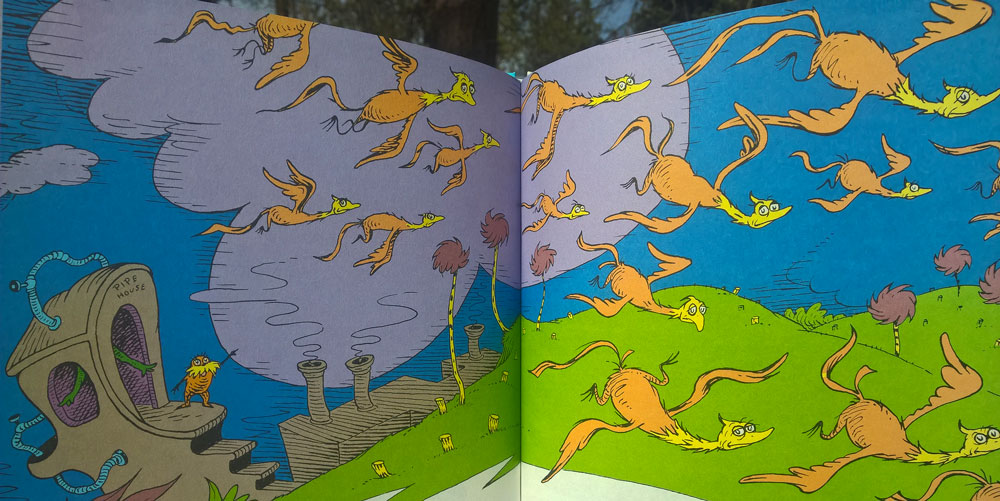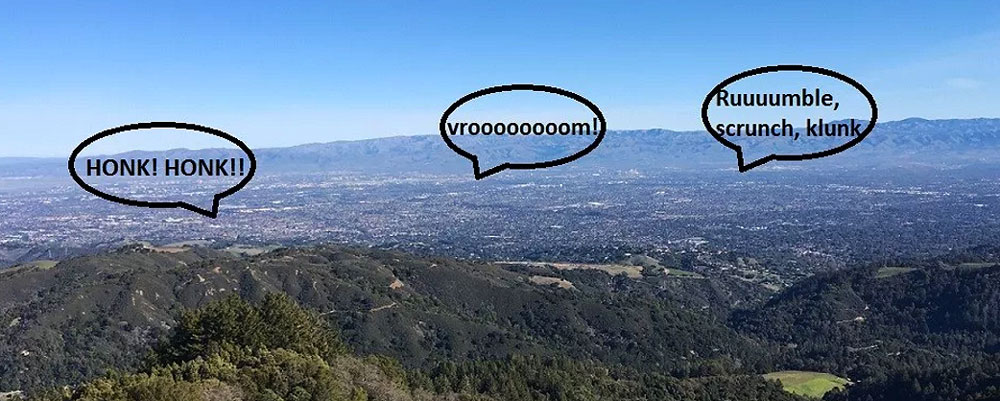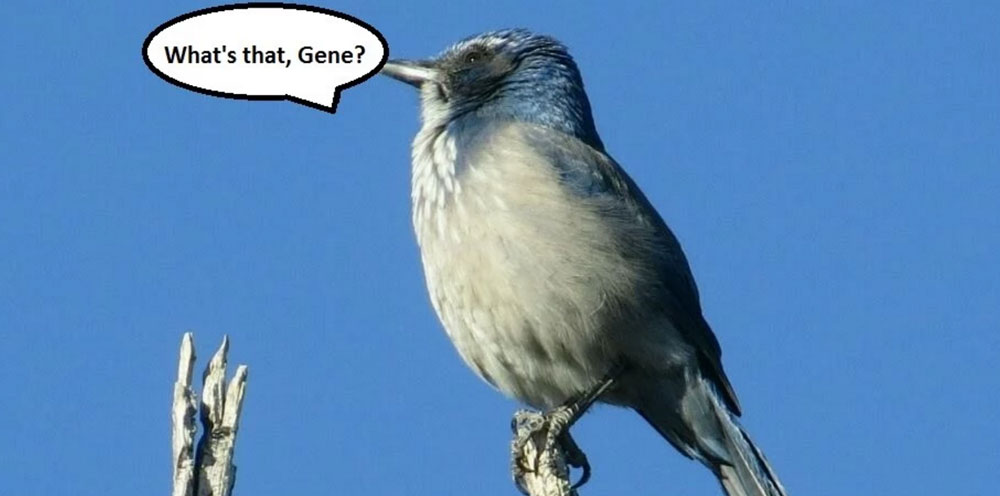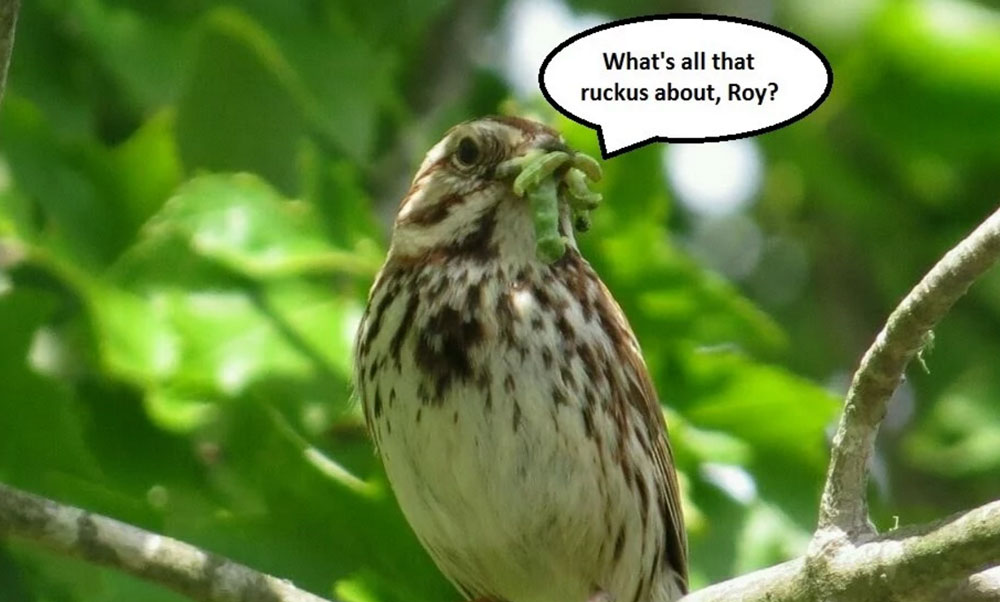To many, pollution is something dark and disgusting that poisons clean air or pristine rivers, like Dr. Seuss’s Smogulous Smog or Gluppity-Glup. However, pollution can be invisible, sly, and can even inhibit communication. We’re talking about noise pollution, and it is as serious as it sounds.

Anthropogenic, or human-made, noise pollution is affecting organisms across many different taxa. Birds are particularly sensitive to its influences since they rely heavily on vocalization for communication.
In order to be heard over the hubbub, birds are changing their behavior or location which can potentially alter entire ecosystems!
Most anthropogenic noise is derived from a combination of traffic, construction, and other sounds related to industry such as oil compressors. To humans, it may appear to be trivial background static since our ears are accustomed to being bombarded with noise, but, for example, one study shows that the mean noise level of a set of New York City streets is 73.4 decibels, which is similar to that of the constant sounds of a coffee grinder or garbage disposal!
 Birds rely on their song to mate, compete for territory, and sound the alarm against predators. The problem is that most anthropogenic noise has a relatively low frequency (or what we think of as a low “pitch,” although the two are not perfectly interchangeable in science) and therefore it covers up the lower frequency portions of song. This means birds are unable to hear one another in the same way. This concerns every species in a noisy area, however, larger birds tend to have lower frequency songs and might be hit the hardest.
Birds rely on their song to mate, compete for territory, and sound the alarm against predators. The problem is that most anthropogenic noise has a relatively low frequency (or what we think of as a low “pitch,” although the two are not perfectly interchangeable in science) and therefore it covers up the lower frequency portions of song. This means birds are unable to hear one another in the same way. This concerns every species in a noisy area, however, larger birds tend to have lower frequency songs and might be hit the hardest.
 If an area is chronically noisy, birds have two choices; to change their location or to change their communication. Some species, like scrub jays for example, are known to avoid nesting in noisy areas, like areas affected by the constant sound of oil compressors. However, the decline of scrub jays in pinyon pine communities is having a negative effect on their renewal. Scrub jays can cache thousands of seeds in a season within a pinyon pine forest, and those seeds that they do not recover can grow into saplings. Their presence is crucial to the health of these ecosystems.
If an area is chronically noisy, birds have two choices; to change their location or to change their communication. Some species, like scrub jays for example, are known to avoid nesting in noisy areas, like areas affected by the constant sound of oil compressors. However, the decline of scrub jays in pinyon pine communities is having a negative effect on their renewal. Scrub jays can cache thousands of seeds in a season within a pinyon pine forest, and those seeds that they do not recover can grow into saplings. Their presence is crucial to the health of these ecosystems.
 Other species, like the black-chinned hummingbird, are drawn to noisy areas for a variety of reasons, like avoiding predators. However, in changing the areas they are choosing, there may be unforeseen effects like the displacement of other bird species. Overall, these changes may be altering ecosystems in many more ways than we can foresee and in turn, may be changing entire food webs!
Other species, like the black-chinned hummingbird, are drawn to noisy areas for a variety of reasons, like avoiding predators. However, in changing the areas they are choosing, there may be unforeseen effects like the displacement of other bird species. Overall, these changes may be altering ecosystems in many more ways than we can foresee and in turn, may be changing entire food webs!
 Many species, like the white-crowned and song sparrows, are changing their song in order to be heard over the ruckus. They increase the minimum frequency of their song, meaning that they sound like they are singing at a higher “pitch,” so that they can be heard over low frequency human-made noise. Females, however, prefer males with a lower frequency song and males are therefore faced with the choice of being better heard or better-liked.
Many species, like the white-crowned and song sparrows, are changing their song in order to be heard over the ruckus. They increase the minimum frequency of their song, meaning that they sound like they are singing at a higher “pitch,” so that they can be heard over low frequency human-made noise. Females, however, prefer males with a lower frequency song and males are therefore faced with the choice of being better heard or better-liked.
The exact implications of the increased presence of noise pollution are yet to be determined, but it is clear that many bird species are being forced to make a variety of changes, whether it be a change in choice of habitat or song pitch. The change in presence and abundance of particular bird species in its given habitat may be affecting ecosystems and shifting entire food webs!
 What can you do about this?
What can you do about this?
Currently, the main ways this issue is being addressed include lowering traffic noise through implementation of barriers and lowered speed limits. As a member of the public, the best approach to addressing noise pollution is to obey speed limits, especially in sensitive areas such as national parks or species dense natural areas. Also, lowering volume of music and other noisy activities while in wildlife areas may also be important. Staying educated and maintaining a respectful relationship with wildlife is always the first step.
 At High Trails Outdoor Science School, we literally force our instructors to write about elementary outdoor education, teaching outside, learning outside, our dirty classroom (the forest…gosh), environmental science, outdoor science, and all other tree hugging student and kid loving things that keep us engaged, passionate, driven, loving our job, digging our life, and spreading the word to anyone whose attention we can hold for long enough to actually make it through reading this entire sentence. Whew…. www.dirtyclassroom.com
At High Trails Outdoor Science School, we literally force our instructors to write about elementary outdoor education, teaching outside, learning outside, our dirty classroom (the forest…gosh), environmental science, outdoor science, and all other tree hugging student and kid loving things that keep us engaged, passionate, driven, loving our job, digging our life, and spreading the word to anyone whose attention we can hold for long enough to actually make it through reading this entire sentence. Whew…. www.dirtyclassroom.com

Comments are closed.